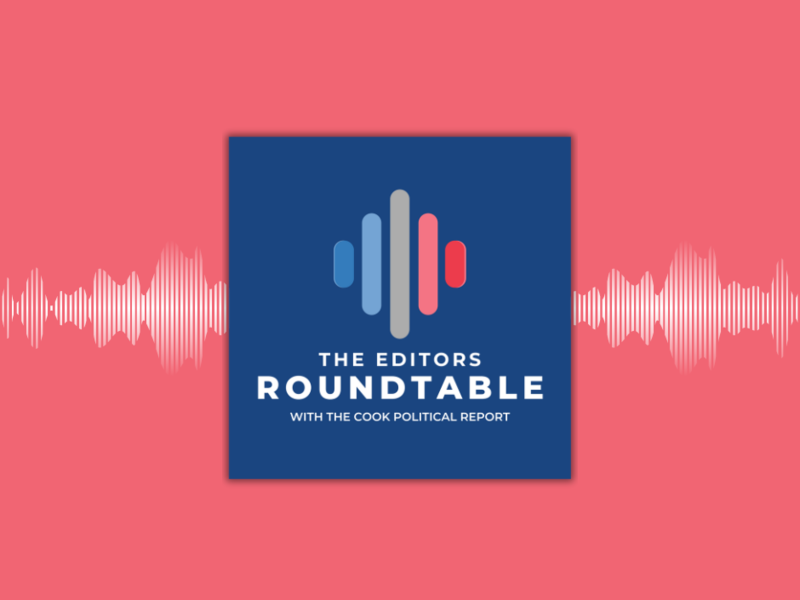
Three themes seem to be developing in this 2018 midterm election. First, the challenge for Republicans of holding onto their House majority is looking increasingly difficult. Second, the fight over the Senate looks very, very tough for Democrats—while the cliché is that demographics are destiny, in Senate races in recent years, geography is destiny. Third, the fight in the states over governorships and state legislative posts is tough for Republicans, specifically control of legislative chambers and with that, the advantage in drawing congressional and state legislative redistricting maps in 2021.
As Democrats learned in 2010, a bad year in the last midterm election before redistricting is the defeat that keeps on defeating, for the next decade. The question is whether it will be bad for Republicans, really bad, or really, really bad. With the House on two-year terms, all but two governorships and most legislative seats on the four-year plan, and the Senate with six-year terms, each of the three arenas are on very different cycles, creating distinctly varying dynamics. But midterms for presidential parties are almost uniformly bad.
The House, with its overall results the most sensitive to national moods and trends, looks awfully tough for Republicans. There are an enormous number of Republican seats in jeopardy with very few opportunities for the GOP to offset their losses by grabbing Democratic seats. In The Cook Political Report’s latest House ratings, examining every district from the 1st District of Alabama through Wyoming’s at-large seat, 10 Republican seats are rated either Leaning or Likely Democratic—in other words, probably turnover districts; an ample down payment, given that Democrats need a net gain of 23 to take a majority. Conversely, there is only a single Democratic seat that is in either the Lean or Likely Republican column. In the Toss-Up column, there are 24 Republican-held seats and only two Democratic seats. While Democrats have two of their own seats (both open) in the Lean Democratic column, Republicans have 25 of their own seats that are just Lean Republican.
To bottom-line all of this: Republicans seriously trail in 10 of their own seats, have 24 teetering on the edge and 25 additional seats in danger, a total of 59 seats in peril. That’s not counting another 27 GOP seats in the Likely Republican column, meaning they are not yet competitive but are being watched very closely. Democrats have one seat trailing, two teetering on the edge and two more in some degree of danger in competitive races, plus nine more seats in the Likely Democratic column.
The macro-political, top-down view similarly shows extreme difficulty for Republicans, including on the generic-congressional-ballot test. Republicans trail by an average of 7.2 percentage points in the RealClearPolitics average, and 8.2 points in FiveThirtyEight’s average, with individual national polls indicating that the GOP is running anywhere from 4 to 13 points behind. On Thursday morning, a Marist University poll taken July 19-22 for NPR and PBS NewsHour of 923 registered voters nationwide was released, putting Democrats ahead by 7 points. Like other polls, it showed a Democratic intensity advantage, with 78 percent of Democrats saying the election was very important compared to just 68 percent of Republicans (keep in mind that, depending upon the poll, voters identifying as Democrats hold a 6- to 8-point advantage over those identifying as Republicans, compounding that deficit). Another telling finding is that while 83 percent of registered voters who are Democrats disapprove of the job that Republicans in Congress are doing, only 53 percent of Republicans approve of their party’s job in Congress, and 69 percent of independents disapprove.
The Democratic wave, both in terms of preference and intensity, gives them a big edge in the House, where the battleground districts are overwhelmingly suburban, with white, college-educated voters in the driver’s seat, particularly women. But the Senate is simply being fought in a different venue, creating a far different dynamic. Republicans are advantaged by having the most favorable map of competitive states that either party has had in modern history. While there are a pair of hotly contested Senate races in swing states—Democrat Bill Nelson in Florida, where President Trump won by a point, and Republican Dean Heller in Nevada, where Hillary Clinton prevailed by 2 points—the rest of the big-time Senate-race states are red (Republican) or pink (GOP-leaning). Democrats really have to worry about incumbents Heidi Heitkamp (North Dakota), Joe Donnelly (Indiana), Claire McCaskill (Missouri), and Joe Manchin (West Virginia), along with Florida’s Nelson, while keeping an eye on Jon Tester (Montana), Bob Casey (Pennsylvania), Sherrod Brown (Ohio), Debbie Stabenow (Michigan), and Tammy Baldwin (Wisconsin).
Meanwhile, Republicans have to be concerned about their open seats in Arizona and Tennessee, along with Heller. Simply put, Republicans have a home-court advantage that is hard for Democrats to overcome, even with a wave encompassing low presidential-approval ratings and an intensity edge. The advantages that Democrats have in the country writ large are significantly diminished in the states that have competitive Senate races.
Given the legislative inertia that has increasingly affected Congress over the past few decades, the outcomes in many of these state contests become far more important. Keep in mind that three-quarters of the nation’s governors and four-fifths of state legislative seats are on the ballot this year. The shoe is on the other foot: Republicans now have to defend—in an unfavorable political climate—all of the seats and chambers they won during President Obama’s two midterm elections when the environment heavily favored Republicans. It is technically true that Democrats can flip eight legislative chambers by picking up just 17 net seats, but some of those races are fairly difficult. The question is whether Democrats are going to gain enough seats in the right places to swing key chambers. According to Tim Storey of the National Conference of State Legislatures, the average net loss for the President’s party in midterm elections is 410, though with the maps in place today, it isn’t clear that Democrats can match that. Still, expect to see a lot more Democratic governors, state legislators, and legislative chambers after this election than there are now. The only question is how many.
This story was originally published on nationaljournal.com on July 24, 2018











Subscribe Today
Our subscribers have first access to individual race pages for each House, Senate and Governors race, which will include race ratings (each race is rated on a seven-point scale) and a narrative analysis pertaining to that race.